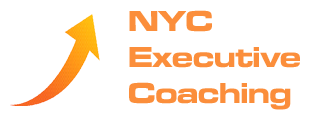From my associate Dan Elliott.
 If the past half decade has taught us anything, it is that the pace of change and disruption is accelerating. From the introduction of artificial intelligence to global tariffs, from demographic shifts to political shifts, business leaders are navigating an environment where yesterday’s assumptions no longer hold true. In this climate, the organizations that thrive are not the ones with the thickest binders of long-term plans, but those that are resilient, agile and are willing to adapt.
If the past half decade has taught us anything, it is that the pace of change and disruption is accelerating. From the introduction of artificial intelligence to global tariffs, from demographic shifts to political shifts, business leaders are navigating an environment where yesterday’s assumptions no longer hold true. In this climate, the organizations that thrive are not the ones with the thickest binders of long-term plans, but those that are resilient, agile and are willing to adapt.
The Limits of Linear Planning
For many years, strategic planning followed a linear model: chart a three-to-five-year course, set goals, and measure progress against them. That model assumes a relatively stable environment. The reality today is far different. Assumptions that were made can be undone in a matter of months. New technologies can change customer expectations overnight. Regulations can appear and shift quickly. Competitors can emerge from unexpected places at almost any time.
This does not mean planning is obsolete, it means that planning must evolve. Strategic thinking is no longer about predicting the future with certainty but preparing for multiple possible futures.
The Role of Scenario Planning
One of the most powerful tools in a disrupted environment is scenario planning. Unlike traditional forecasting, which projects one “most likely” outcome, scenario planning forces leaders to consider a range of plausible futures and test how their strategies hold up.
For example, a financial services firm might ask:
- What if markets turn downward or go flat for the next five years?
- What if new AI-driven platforms change how X, Y and Z generation clients expect to interact with advisors?
- What if consolidation in the industry accelerates, and we must compete with fewer but larger players?
By examining these scenarios, organizations can stress-test their strategies and build contingency plans. The goal is not to prepare for every possibility, but to ensure the organization can pivot when conditions change.
Building Organizational Resilience
If disruption is inevitable, resilience then becomes essential. Resilient organizations share several traits:
- Clarity of Purpose: A well-defined mission and set of values provide stability even as tactics shift.
- Flexibility of Resources: Maintaining financial reserves, cross-training employees, and diversifying partnerships all allow quicker responses to change.
- Culture of Adaptability: Teams that are encouraged to learn, experiment, and respond without fear of failure are better prepared to navigate uncertainty.
Resilience is less about predicting disruption and more about accepting it without losing focus on your direction.
Process Over Perfection
Another mindset shift is moving away from the idea of the “perfect” plan. Too often, organizations spend months crafting strategies that become outdated within weeks of their approval. A better approach is to view strategy as a living process.
This means shorter planning cycles with regular check-ins, quarterly reviews of key assumptions, and a willingness to course-correct when facts and circumstances suggests a shift is needed. Leaders who treat strategic planning as an ongoing conversation rather than a static event keep their organizations more agile and engaged.
The Leadership Mindset
At the center of all this is leadership. In times of disruption, leaders must demonstrate adaptability, steadiness, and clarity of their vision. Teams look to leadership not for certainty, but for confidence that the organization can navigate uncertainty.
Communication is critical. Leaders should articulate the long-term vision while openly acknowledging the unknowns. By doing so, they create trust and encourage shared ownership of the strategy. The role of the modern leader is not command-and-control, but sense-and-respond – monitoring changing conditions and preparing the organization to pivot as needed.
Practical Steps for Leaders
While every organization faces different challenges, these practical steps can strengthen any strategic planning process in a disruptive environment:
- Shorten the cycle. Keep a long-term vision but revisit plans quarterly to adjust assumptions.
- Use scenarios. Develop two or three “what if” models and stress-test strategies against them.
- Build resilience. Maintain financial stability, deepen your talent pool, and foster a culture that embraces adaptability.
- Align daily actions. Ensure employees understand how their work connects to broader goals.
- Communicate with clarity. Share both the vision and the process for adapting along the way.
Closing Thoughts
Strategic planning is not about eliminating uncertainty – it’s about being equipped to face it with confidence. In this age of disruption, the winners will not be those who cling to rigid plans, but those who stay true to their purpose while remaining flexible in their approach. Much like sailing, success comes not from controlling the wind but from adjusting the sails to harness it.


 Close your eyes for a moment and create a picture of your company where 70% of the leaders are resilient and empowered to be adaptable and innovative. Then, create a picture of the competitive advantage the entire organization creates by working in this way. Is that a place you would like to lead and work for? That is what Strategic Coaching can deliver.
Close your eyes for a moment and create a picture of your company where 70% of the leaders are resilient and empowered to be adaptable and innovative. Then, create a picture of the competitive advantage the entire organization creates by working in this way. Is that a place you would like to lead and work for? That is what Strategic Coaching can deliver. From my associate Grant Tate.
From my associate Grant Tate. From my associate Howard Litwak.
From my associate Howard Litwak.  Do you want to fix the toaster, or do you keep scraping the burnt part off the toast? It seems like a simple question, but hear me out.
Do you want to fix the toaster, or do you keep scraping the burnt part off the toast? It seems like a simple question, but hear me out. In the previous issues, I discussed the initial phases of transitioning from a business in its infancy to becoming a sustainable business. I discussed the challenges and the growing pains that are experienced by many companies in that part of the growth curve and understanding the six key organizational development tasks to navigate.
In the previous issues, I discussed the initial phases of transitioning from a business in its infancy to becoming a sustainable business. I discussed the challenges and the growing pains that are experienced by many companies in that part of the growth curve and understanding the six key organizational development tasks to navigate. “There is only one strategy, Tate.”
“There is only one strategy, Tate.” With the accelerating changes in technology, cyber-security, and geopolitical tensions, the question arises are US company Boards addressing National Security as a significant risk? Or perhaps the better question would be: how do Boards need to address the impact and opportunity of the interdependence/intersection of technology, cyber-sec, and geopolitics comprehensively?
With the accelerating changes in technology, cyber-security, and geopolitical tensions, the question arises are US company Boards addressing National Security as a significant risk? Or perhaps the better question would be: how do Boards need to address the impact and opportunity of the interdependence/intersection of technology, cyber-sec, and geopolitics comprehensively? From my associate Janice Giannini.
From my associate Janice Giannini.